View analytics for the portfolio level only

 Role required: User, Vulnerability Manager or Group Manager
Role required: User, Vulnerability Manager or Group Manager
- Read Sort groups into portfolios to learn to create these sets.
- Hover over charts to see available options.
Remediation rate benchmark
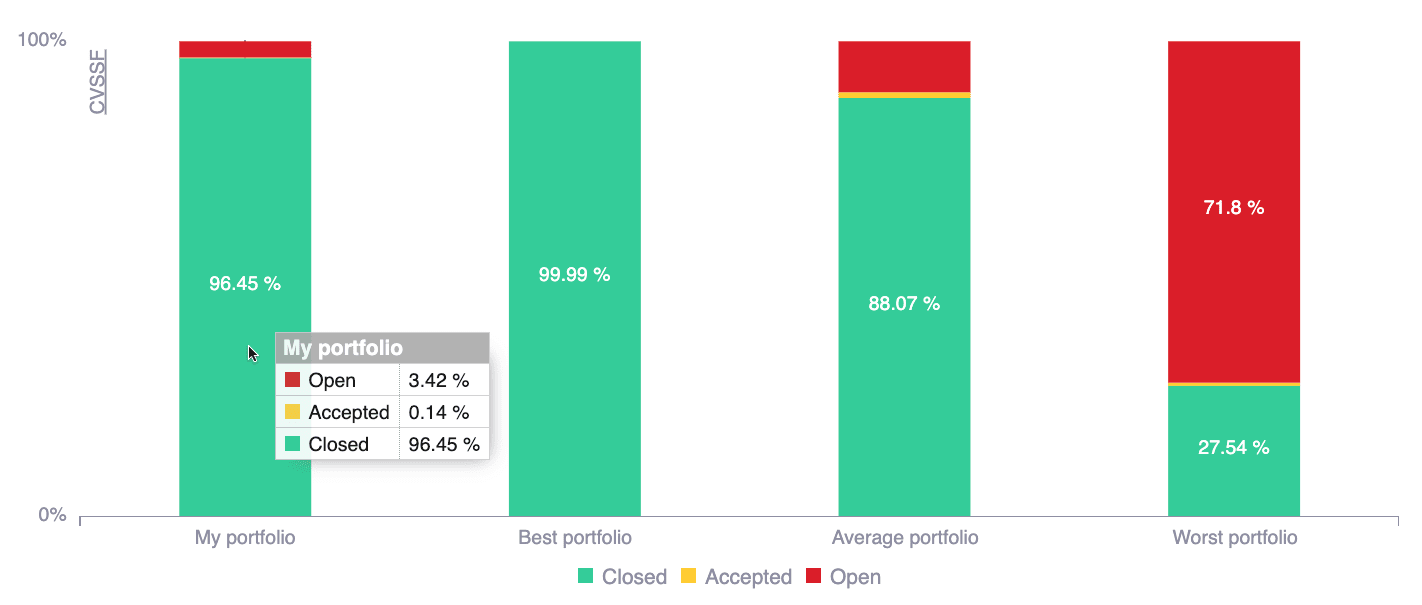
This chart offers an overview of your risk exposure management at the portfolio level. This is shown through its correspondence with closed (remediated), accepted, and open (not remediated, not accepted) vulnerabilities and their distribution relative to the total detected amount. Further, you can compare your remediation rate to the best-performing and worst-performing portfolios across all organizations, as well as against the average performance of portfolios. This benchmarking helps you define remediation rate goals.
- Hover over a bar to see all the complete percentages information
- Hover over a chart legend to highlight the corresponding portion in the chart
- Click on a chart legend to hide the corresponding information from the visual comparison
Distribution of vulnerabilities by group
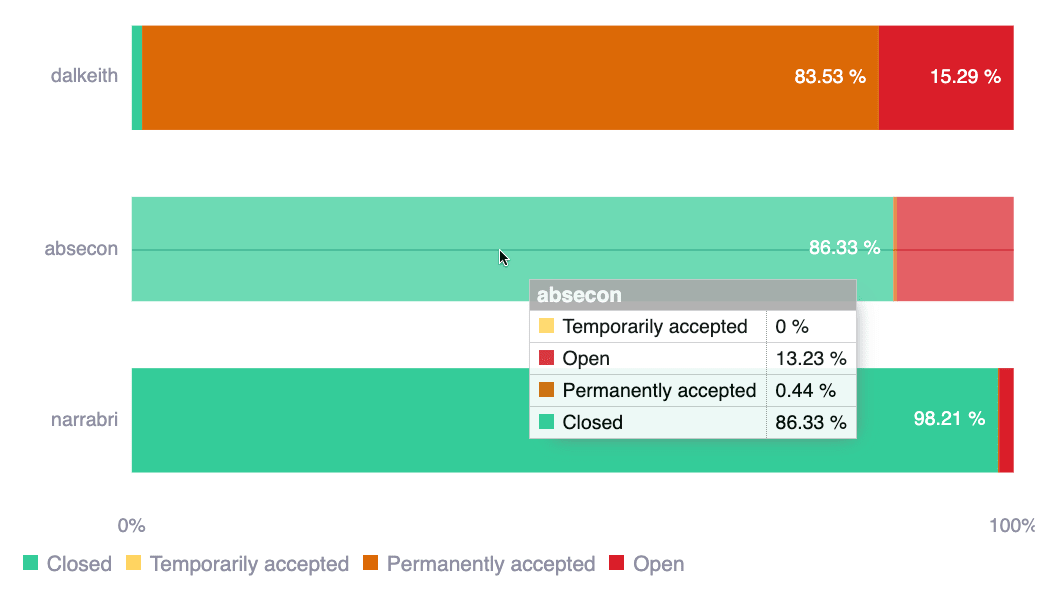
This visualization breaks down the distribution of vulnerabilities by how they have been managed so far (closed, open, temporarily accepted, and permanently accepted) in the different groups within your portfolio. This allows you to identify which groups may require additional attention or resources to improve their vulnerability management.
- Hover over a bar to see the complete percentages information
- Hover over a chart legend to highlight the corresponding portion in the chart
- Click on a chart legend to hide the corresponding information from the visual comparison
Open vulnerabilities by group
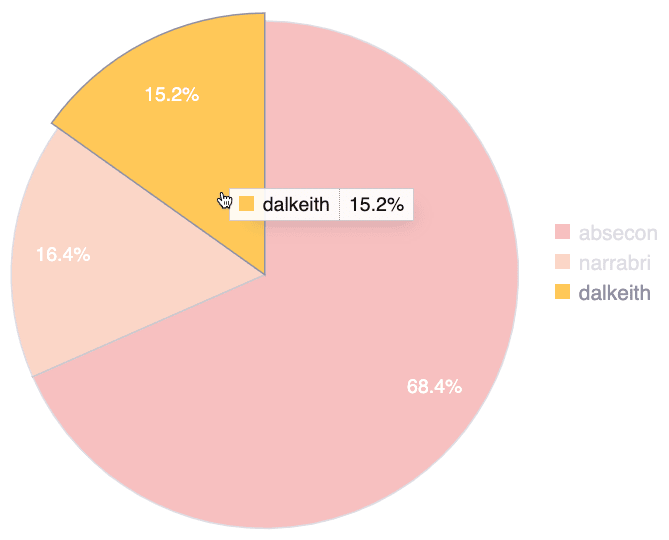
This chart displays the percentage of open vulnerabilities (i.e., those that are present and unaccepted) within each group relative to the total number of open vulnerabilities in your entire portfolio. This helps you pinpoint groups with a higher concentration of unresolved cybersecurity issues.
- Hover over a slice to see it highlighted along with the name of the group and corresponding percentage
- Hover over a chart legend to highlight the corresponding slice
- Click on a chart legend to exclude the corresponding group from the percentage calculation
Undefined treatment by group
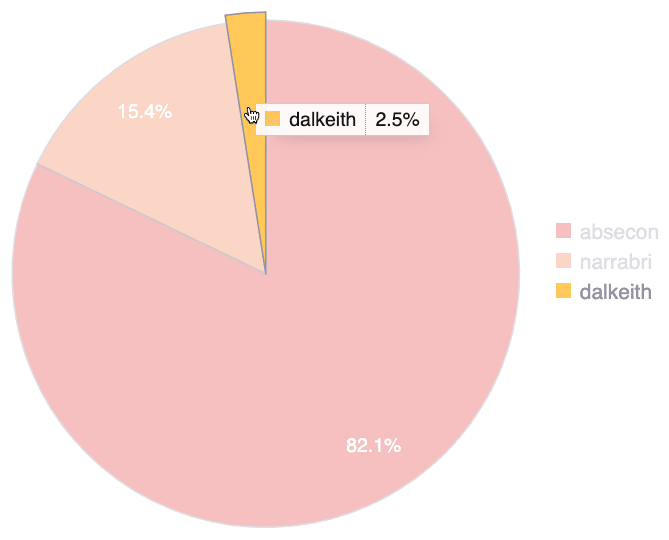
This chart shows the percentage of vulnerabilities within each group that have not yet been assigned a treatment plan (e.g., In progress, Temporarily accepted) relative to the total number of untreated vulnerabilities in your entire portfolio. This allows you to identify groups where assigning treatments to vulnerabilities is urgently needed.
- Hover over a slice to see it highlighted along with the name of the group and corresponding percentage
- Hover over a chart legend to highlight the corresponding slice
- Click on a chart legend to exclude the corresponding group from the percentage calculation
Exposure by group
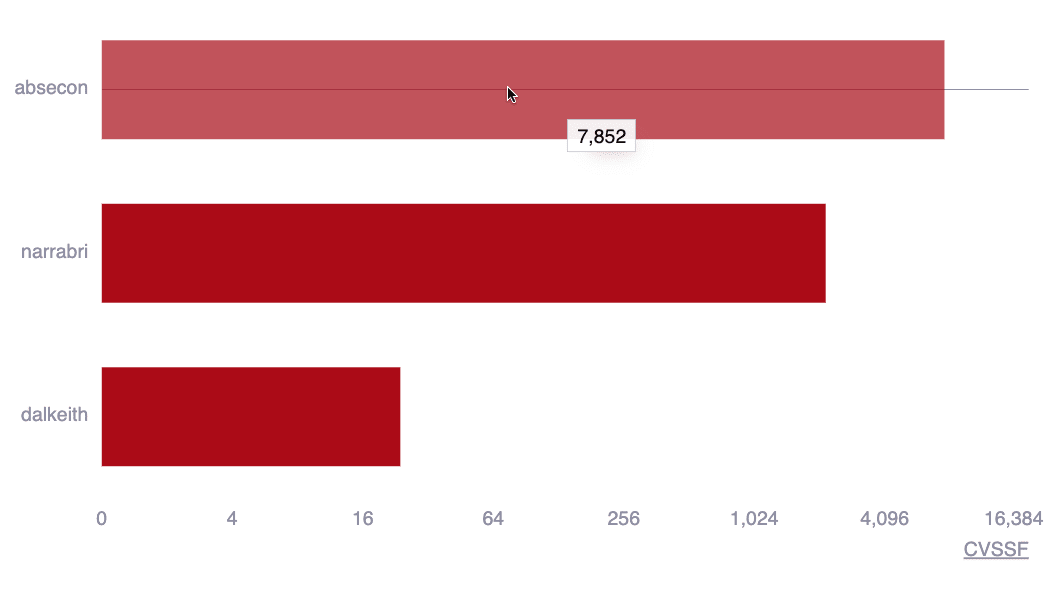
This chart provides the risk exposure (measured in CVSSF units) that unmanaged, unaccepted vulnerabilities represent in each group of the portfolio. This way, you can decide in which group to prioritize risk exposure reduction.
Open vulnerability types by group

This chart informs of the types of vulnerabilities still present and unaccepted within each group. This information helps you prioritize remediation efforts accordingly.

Vulnerabilities by group
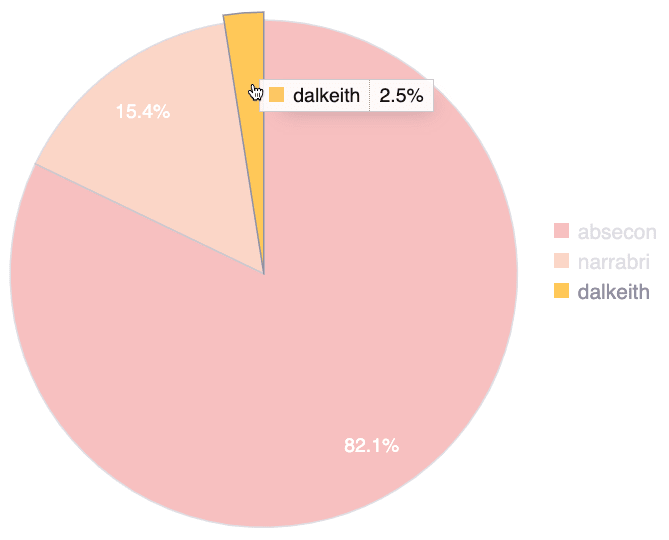
This chart presents the share of reported vulnerabilities of each group relative to the total amount within the portfolio. This allows you to compare projects on the amount of security issues found.
- Hover over a slice to see it highlighted along with the name of the group and corresponding percentage
- Hover over a chart legend to highlight the corresponding slice
- Click on a chart legend to exclude the corresponding group from the percentage calculation
Unsolved events by group

This chart offers the number of unsolved events affecting each group. Events are situations that hinder Fluid Attacks' tools or security analysts from conducting security testing on part or all of a group's scope. Addressing these events is crucial to ensure comprehensive security assessments, and, therefore, this chart helps you prioritize solving one or multiple reported to a specific group.
Vulnerability types by group

This chart informs of the total types of vulnerabilities detected within each group. This information helps you compare projects on the amount of security issue categories encountered.
Oldest vulnerability types

This graph highlights the types of vulnerabilities across your portfolio that have remained unmanaged for the longest duration (days). This helps you identify and prioritize long-standing issues.
Overall availability time of groups
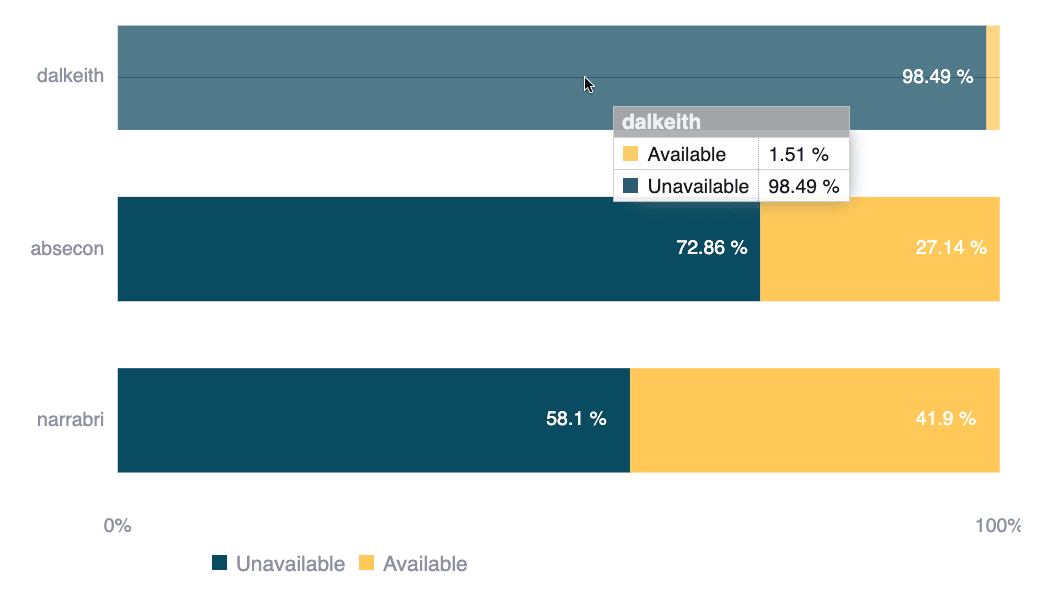
This chart shows the percentage of time each group has been impacted by events (i.e., situations that prevented security testing), relative to the group's total lifespan. This allows you to identify one or more groups that might be needing more care.
Days since groups are failing
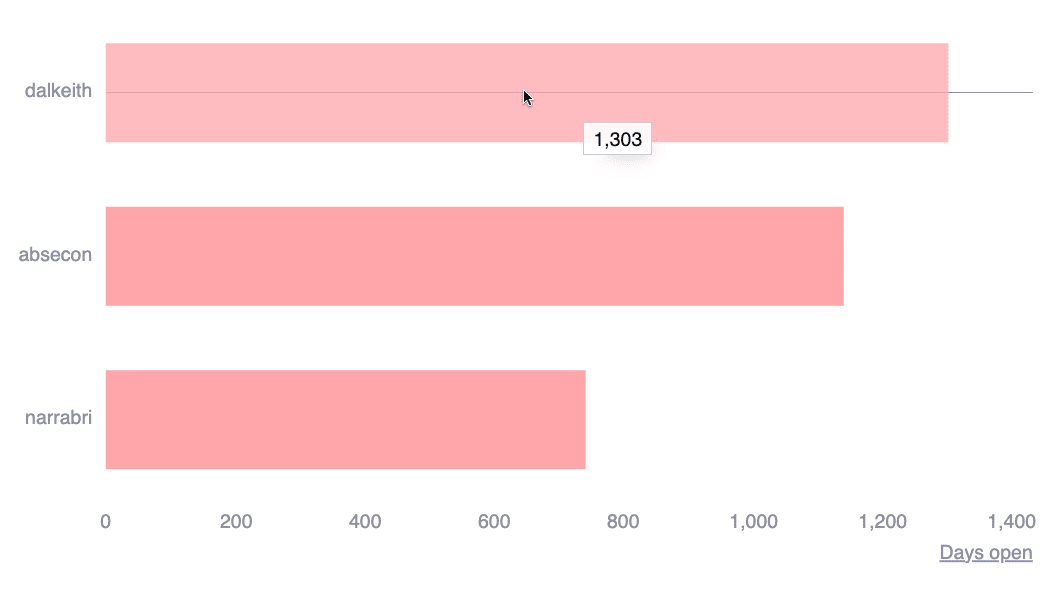
This chart presents how long the oldest unsolved event has persisted within each group. This information helps you identify groups with long-standing issues that need urgent resolution to enable security testing.
Tags by groups

This chart displays all the tags you have created to identify vulnerabilities and how many times each of them is used in the different groups in your portfolio. This helps you analyze security issues across your groups using categories that are especially significant for your team.

